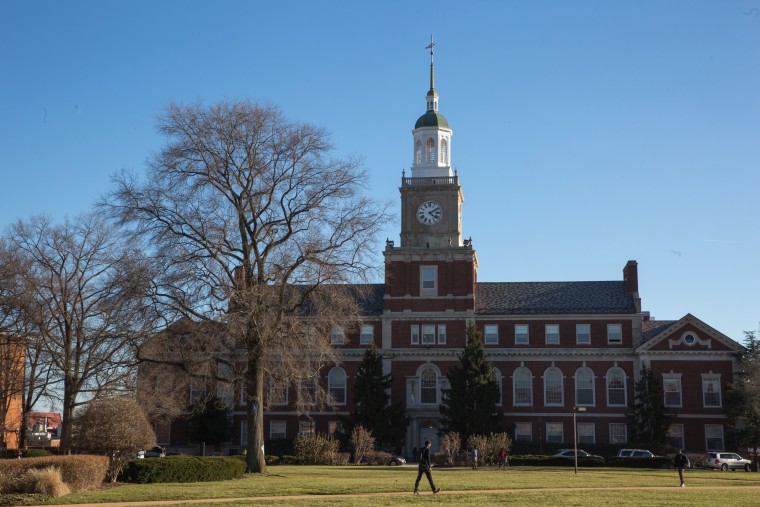Graduates of historically black colleges and universities and Hispanic-serving institutions may be paying more to borrow and refinance their education loans, according to a report released this week by a group that works to alleviate student debt.
Researchers at the group, the Student Borrower Protection Center, compared loan rates of potential borrowers with nearly identical backgrounds through Upstart, an online lending platform. For each profile, they listed the same major, occupation and annual income. The only difference between the profiles was the undergraduate college listed.
In a report released Wednesday titled "Educational Redlining," the researchers found that hypothetical graduates of historically black colleges and universities, or HBCUs, and Hispanic-serving institutions, or HSIs, like Howard University and New Mexico State University, were offered loans that cost thousands of dollars more than those who attended nonminority serving institutions, such as New York University.
"It seems apparent when you do the side-by-side comparisons that where this hypothetical borrower went to school mattered in terms of how Upstart measured their creditworthiness, and that to Upstart there's a penalty for attending an HBCU or HSI," Kat Welbeck, the civil rights counsel at the Student Borrower Protection Center, said.
Welbeck called the finding especially "alarming," given that HBCUs and HSIs play a significant role in expanding access to higher education. Not only do they serve underrepresented racial and cultural groups, but these institutions are more likely to enroll women and older students.
Researchers also found that potential borrowers with nearly identical demographic backgrounds were afforded different loan packages from Wells Fargo depending on whether they graduated from community colleges or four-year institutions. In one case study, a potential borrower who worked as a financial analyst making $50,000 a year paid $1,134 more in loans if he or she had attended Los Angeles ORT College, a community college, versus Chapman University, a private four-year university.
"Basing a person's creditworthiness on how ostensibly elite the institution they attended will perpetuate inequality and socioeconomic barriers," Welbeck said. "We talk about using educational data as innovative, but this is redlining education."
Upstart and Wells Fargo disagreed with the Student Borrower Protection Center's assessment of their loans, however.
"The study's characterizations ... do not reflect our lending practices and its conclusions are exaggerated," wrote Vickee Adams, senior vice president of corporate communications at Wells Fargo, in an emailed statement.
She added that the online tools the Student Borrower Protection Center used in its report to derive loans offers were solely estimates and that “an actual completed application is the best way to determine the details and costs associated with any loan."
According to Diana Adair, Upstart's head of communications, the firm has conducted its own studies with the Consumer Financial Protection Bureau that contradict those of the "Educational Redlining" report and show that its model has increased access to credit, regardless of race, ethnicity and gender, by more than 20 percent.
Adair called the study’s stated methodology “inaccurate and misleading” and disputed the Student Borrower Protection Center’s claim that it used nearly identical profiles to assess the cost of loans. Instead, Adair claimed that the organization submitted different credit reports, which she said was ultimately the factor that affected the interest rates offered — not the schools the hypothetical students attended.
Yet, the Student Borrower Protection Center maintains that it simply used Wells Fargo and Upstart’s “own data” to arrive at its conclusions. The organization is now calling on Congress and federal and state financial regulators to investigate and scrutinize the use of education data in underwriting loans. It is also requesting that consumer lenders regularly publish information on underwriting decisions and pricing that relies on education data to increase transparency.
